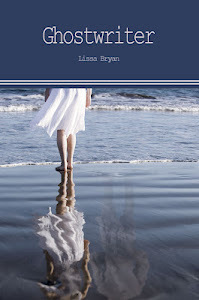Learning Curve: Editing and Publishing
The Writer’s Coffee Shop contacted me early last year and asked if I would be interested in writing a novel. They had seen some of my online stories, one of which had become surprisingly popular. Those online stories were the only writing I have ever done. I have no formal training, not even an online course, and so it was a matter of learning to be a writer as I went, making mistakes and trying to learn from them.
The editing process taught me the most. I had two different editors, and both of them had something different to teach me. Most of the time, authors are assigned one editor who continues working with them in their next books, but scheduling issues prevented me from having the same team on the second book. It was such a great learning opportunity I told them I would be okay with it if they wanted to assign a new editor to me for the third.
 I used to correspond with a published author. Her writing advice was the best I have ever been given: “Every scene, every sentence, every word, must drive the plot forward. If it doesn’t move the plot or reveal something important about the characters, cut it. If you can cut it without impacting your novel, it’s just dead weight, dragging your story down.” It is not easy to do. Even with that advice in mind, there were “dead weight” scenes in my manuscript I didn’t want to cut. I tried to make excuses for them, but in the end, I had to admit they served no real purpose, no matter how much I liked them. This one of the things a good editor does for you: gently, but firmly forces you to see where you’ve gone off-track.
I used to correspond with a published author. Her writing advice was the best I have ever been given: “Every scene, every sentence, every word, must drive the plot forward. If it doesn’t move the plot or reveal something important about the characters, cut it. If you can cut it without impacting your novel, it’s just dead weight, dragging your story down.” It is not easy to do. Even with that advice in mind, there were “dead weight” scenes in my manuscript I didn’t want to cut. I tried to make excuses for them, but in the end, I had to admit they served no real purpose, no matter how much I liked them. This one of the things a good editor does for you: gently, but firmly forces you to see where you’ve gone off-track.
One of the first things my editor did was send the manuscript back to me with all of the uses of the word “that” highlighted. “That” is one of the most over-used words in the English language. If the sentence makes sense without it, cut it. I was able to trim out an embarrassingly large number of them.
My second crime against literature was my passionate love for adverbs. Stephen King says the road to hell is paved with them, and he is right. They often tie into that old saying, Show, don’t tell, which was another struggle of mine. It is the difference between writing, “He paced angrily,” and “He paced with his hands clenched, his eyes narrowed and glittering.” The first tells us what he is feeling, the second shows us his emotional state through his body language.
It is part of learning to trust your reader. There’s an old story, likely apocryphal, Hemmingway bet a friend that he could write an entire story in just six words. He won the bet with this: “For sale: baby shoes, never worn.” With those six words, he gives the reader a full picture, because your mind supplies the necessary details: the crushed hopes of a bereaved family in a dire financial state. Sometimes, the most powerful words are those left unwritten.
 Some of these lessons I learned only in retrospect, but writing is a lifelong journey. I can’t regret my mistakes, because they were valuable lessons. “We’re all apprentices in a craft where none is truly a master,” as the saying goes. I cannot wait to see what I will learn next.
Some of these lessons I learned only in retrospect, but writing is a lifelong journey. I can’t regret my mistakes, because they were valuable lessons. “We’re all apprentices in a craft where none is truly a master,” as the saying goes. I cannot wait to see what I will learn next.
Contact and Follow Lissa:
Blog: http://lissabryan.blogspot.com
Twitter: https://twitter.com/LissaBryan
Facebook: http://www.facebook.com/lissa.bryan
GoodReads: http://www.goodreads.com/author/show/5442345.Lissa_Bryan
Buy: http://ph.thewriterscoffeeshop.com/authors/detail/42
http://www.amazon.com/Lissa-Bryan/e/B009N6CFTQ
https://itunes.apple.com/us/book/ghostwriter/id560564245
This blog post is Copyright Lissa Bryan 2013. All rights are reserved Internationally. You may not reproduce it in any form, in part of whole, without the author’s prior written permission. That includes usage in forms such as print, audio and digital imaging including pdf, jpg, png etc. A fee may be requested for re-use if it is for a commercial venture.
Filed under: Guest Post, Writing Tagged: author, books, discovery, editing, fiction, goals, growth, inspiration, learning, Lissa Bryan, novel, problem solving, publishing, resource, success, writer, writing












